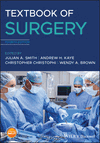Massive haemoptysis
Summary
Massive or life-threatening haemoptysis may defined as more than 100 mL of expectorated blood in a 24-hour period. The major causes of such are benign diseases: tuberculosis, aspergillosis and pulmonary abscess. Bronchial neoplasms are seldom implicated (<5%). Bronchoscopy is the initial investigation and may facilitate therapy in instances. Angiography and subsequent bronchial or pulmonary branch arterial embolisation may be employed in unfit patients where a surgical approach may be contraindicated. Only a small number of patients now come to surgery but nevertheless surgical resection remains an important component of therapy. In the emergency high-risk situation, the combination of arterial embolisation and surgery will often improve the patient's outcome, especially in the management of the various benign pathologies causing significant bronchial haemorrhage.



